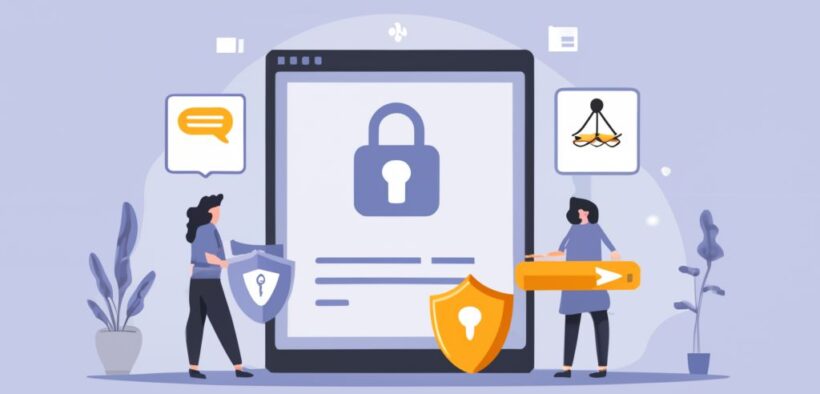2024 SaaS Security Insights: 7 Key Trends You Can’t Ignore
Share

The world of SaaS has become the backbone of modern business, with applications permeating every department and impacting every facet of operation. From marketing automation and CRM platforms to collaboration tools and cloud storage, organizations are embracing the convenience, scalability, and agility that SaaS offers. However, this rapid adoption presents a formidable challenge: securing sensitive data in a dynamic and increasingly complex cloud environment.
7 Key Trends Reshaping SaaS Security in 2024
To stay ahead of the curve, organizations must not only understand the evolving security landscape but also proactively adapt their strategies. Here, we delve into the 7 key trends that are reshaping SaaS security in 2024 and beyond, offering insights and actionable steps to help you navigate this ever-changing terrain.
Democratization of SaaS: A Power Shift with Security Implications
Business units, empowered by user-friendly platforms and self-service options, are taking charge of their own SaaS needs. While this fosters agility and innovation, it also presents a security challenge. Decentralized procurement and onboarding can lead to shadow IT, inconsistent data governance, and fragmented security controls.
Solution:
- Collaboration over confrontation: Foster open communication and collaboration between business units and security teams. Empower business units with security awareness training and provide a curated list of approved SaaS options.
- Centralized visibility and control: Implement a CASB (Cloud Access Security Broker) solution to gain unified visibility into all SaaS applications used across the organization. Enforce consistent security policies and configurations centrally.
- Shared responsibility: Clearly define roles and responsibilities for all stakeholders. Business units own the selection and use of applications, while the security team provides guidance and oversees overall security posture.
ITDR: Beyond Passwords, the Identity Battleground Expands
Traditional perimeter security crumbles in the cloud. User accounts are the new security perimeter, making compromised credentials a gateway to sensitive data. Static password defenses are no longer enough.
Solution:
- Embrace ITDR (Identity Threat Detection & Response): Deploy ITDR solutions that go beyond static passwords. Leverage UEBA (User Entity and Behavior Analytics) to analyze user behavior within SaaS applications, detecting anomalies like suspicious access patterns, privilege escalation attempts, or data exfiltration.
- MFA is mandatory: Enforce multi-factor authentication (MFA) across all SaaS applications to add an extra layer of protection against unauthorized access, even if credentials are compromised.
- Continuous monitoring and education: Regularly monitor user activity and educate employees on secure password practices and the importance of reporting suspicious activity.
Cross-Border Compliance: A Regulatory Labyrinth
Global companies face a daunting maze of regulations, with data residency requirements and compliance mandates varying by region. Managing security configurations for numerous, geographically dispersed tenants becomes a complex task.
Solution:
- Multi-tenant SaaS security solutions: Utilize platforms that enable centralized policy management and configuration enforcement across different regions. Ensure data residency compliance with built-in data location controls.
- DLP for data governance: Implement Data Loss Prevention (DLP) tools to ensure sensitive data remains within compliant boundaries based on regional regulations.
- Partner with local experts: Partner with regional security experts to navigate the intricacies of specific regulations and ensure compliance across all markets.
Misconfigured Settings: A Ticking Time Bomb of Human Error
Complex SaaS platforms with intricate settings are prone to human error and misconfigurations. These seemingly minor mistakes can create gaping security vulnerabilities, as seen in recent incidents with ServiceNow and Salesforce.
Solution:
- Automate configuration management: Implement automated configuration scanning and remediation tools to proactively identify and fix misconfigurations before they become security breaches.
- Integrate CMDBs and security solutions: Integrate Configuration Management Databases (CMDBs) with security solutions to ensure configurations align with best practices and are continuously monitored for deviations.
- Continuous vigilance and updates: Regularly update security configurations based on evolving threats and emerging vulnerabilities. Leverage threat intelligence feeds to stay ahead of potential misconfiguration risks.
Third-Party App Explosion: Taming the Wild West of Integrations
Third-party apps offer enhanced functionality but also introduce unknown risks. Uncontrolled integrations create blind spots, with organizations lacking visibility into permissions granted, usage patterns, and security posture of these interconnected apps.
Solution:
- Robust TPRM program: Establish a comprehensive Third-Party Application Risk Management (TPRM) program. Evaluate and approve apps based on rigorous security assessments, data access requests, and integration protocols.
- CASB integration with app marketplaces: Integrate CASB solutions with third-party app marketplaces to streamline authorization and monitoring processes. Gain real-time insights into app usage and permissions granted.
- Continuous monitoring and risk assessment: Regularly monitor third-party app activity and usage patterns. Reassess their security posture based on new information and potential vulnerabilities.
Secure Work-From-Anywhere: Beyond the Castle Walls, Expanding the Attack Surface
Remote and hybrid work models are here to stay, blurring the lines between personal and corporate devices. Accessing SaaS applications from personal devices with varying security standards creates new attack vectors for unauthorized access and malware infections.
Solution:
- Zero-trust security: Embrace zero-trust security principles that verify user identity and device security before granting access to SaaS applications. Don’t rely solely on location-based controls.
- Multi-factor authentication and device posture checks: Enforce multi-factor authentication (MFA) for all access, regardless of device. Implement device posture checks to ensure devices meet minimum security standards before granting access.
- Endpoint detection and response (EDR): Consider deploying EDR solutions to monitor devices for suspicious activity, detect malware infections, and respond to potential breaches quickly.
SSPM: The Unified Command Center for SaaS Security
Fragmented security tools and manual processes managing diverse SaaS applications create inefficiencies and hinder threat detection and response. Security teams are overwhelmed by the complexity of juggling multiple solutions.
Solution:
- SaaS Security Posture Management (SSPM): Implement an SSPM platform that unifies visibility and control across your entire SaaS ecosystem. Gain insights into configurations, user activity, third-party apps, and device access across all SaaS applications.
- Automated management, detection, and response: Automate configuration management, misconfiguration detection, third-party app monitoring, user activity tracking, and device access control.
- Integrated ITDR for proactive threat detection: Integrate ITDR capabilities within your SSPM platform to detect suspicious user behavior and anomalous activity within SaaS applications, enabling proactive threat response.
Embracing the Future of SaaS Security
These seven trends paint a vivid picture of the evolving SaaS security landscape, demanding a proactive and multi-layered approach. While challenges abound, so do opportunities. By understanding these trends, implementing comprehensive security solutions, and fostering a culture of security awareness, organizations can confidently navigate the future of SaaS, embracing its benefits while safeguarding their data and ensuring business continuity. Remember, securing your data in the cloud is not a one-time event, but an ongoing journey of adaptation and vigilance.
Beyond these core trends, stay tuned for emerging developments in areas like:
- Artificial intelligence (AI) and machine learning (ML) integration: These technologies can help automate threat detection, analyze vast amounts of data, and predict potential security breaches.
- Quantum computing and its potential impact on encryption: While still in its early stages, quantum computing could pose challenges to traditional encryption methods. Organizations need to stay informed and explore quantum-resistant cryptography solutions.
- Focus on data privacy and compliance: Evolving regulations like GDPR and CCPA will continue to shape data privacy practices and influence data security measures within SaaS applications.
By staying ahead of the curve and embracing these dynamic trends, organizations can ensure their SaaS environment remains secure and resilient, paving the way for continued success in the ever-evolving digital landscape.



Your point of view caught my eye and was very interesting. Thanks. I have a question for you.
Share your question here. I shall try my best to answer it.